K-12 Curriculum
OVERVIEW
This section looks at the Curriculum Standards, “Information Literacy Standards for Student Learning” published in 1998 by the American Association of School Librarians and the Association for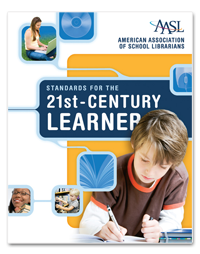 Educational Communications and Technology; a typical curriculum development cycle; Common Core Curriculum Development Standards; Lesson Planning Structure; i.pel Study Guides; K-12 Education Restructuring and Information Literacy; K-12 Accreditation.
Educational Communications and Technology; a typical curriculum development cycle; Common Core Curriculum Development Standards; Lesson Planning Structure; i.pel Study Guides; K-12 Education Restructuring and Information Literacy; K-12 Accreditation.
Technology is changing the development of contemporary k-12 curriculum like never before. The computer has spawned to eBook and the progressive Blended Learning (see: Personalized/Blended-based eLearning) teaching models have introduced distance learning through the use of multimedia. In addition, because technology is making the k-12 student smarted and more aware the challenge of contemporary k-12 curriculum development is to not only keep abreast of these sociological changes but to also developed curriculum which is rigorous enough to be challenging to all types of student learning styles. (see K-12 Learning & Teaching Platforms).
As stated in the report titled, “Ready or Not: Creating a High School Diploma That Counts,” (see Common Core Initiative) current high-school graduate exit expectations fall well short of [employer and college] demands. As a guide to the development of contemporary K-12 curriculum the Common Core Initiative’s stated purpose is to “provide a consistent, clear understanding of what students are expected to learn, so teachers and parents know what they need to do to help them.” Additionally, “The standards are designed to be robust and relevant to the real world, reflecting the knowledge and skills that our young people need for success in college and careers,” which will place American students in a position in which they can compete in a global economy.
There are two types of curriculum. “Core,” or what is commonly called “basal,” curriculum and “supplemental” curriculum. The core curriculum is the main carrier for content in a course and typically has a defined scope and sequence. Traditionally, the core was the textbook for the course, which often came with a variety of other materials, such as videos, software, and teacher professional development.
 Supplemental materials literally supplement basal materials, and can take a variety of forms, including for example, a four-week module that covers a particular topic in depth, a video that shows a dramatic event, a game that provides practice for a skill or concept, or a consumable workbook. In the 1980s, basal curriculum accounted for as much as 75% of spending on instructional materials. By 2000, spending on basal and supplemental had become equal. Now supplemental instructional materials, including testing and assessment and reference materials, are at least double the basal.
Supplemental materials literally supplement basal materials, and can take a variety of forms, including for example, a four-week module that covers a particular topic in depth, a video that shows a dramatic event, a game that provides practice for a skill or concept, or a consumable workbook. In the 1980s, basal curriculum accounted for as much as 75% of spending on instructional materials. By 2000, spending on basal and supplemental had become equal. Now supplemental instructional materials, including testing and assessment and reference materials, are at least double the basal.
In addition, the line between what is considered basal and what is considered supplemental is being blurred. Some schools are finding that their needs are better met through picking and choosing supplemental materials than through a monolithic basal product. Because purchase of supplemental materials can sometimes be funded through nontraditional instructional materials budgets, supplemental content needs to be linked to standards.
Curriculum history considers what societies value enough to pass on to younger generations through its schools. The foremost question which has not changed throughout the years is “What should schools teach?” Curriculum historians address two important questions as they look to the past and its continuing influence on the present: (1) What was the understood knowledge in previous times? and (2) What are the end results of curriculum thought and practice? The study distinguishes between the intended curriculum and the enacted curriculum and how those two often varied greatly. 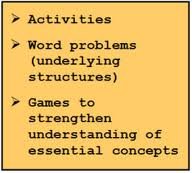 Previous research shows how earlier curriculum theorists and practitioners have addressed those questions. Knowledge of curriculum history by practitioners in the field is necessary for better preparation of future teachers.
Previous research shows how earlier curriculum theorists and practitioners have addressed those questions. Knowledge of curriculum history by practitioners in the field is necessary for better preparation of future teachers.
With the introduction of the Common Core State Initiative what students are expected to know, when they are expected to know it, and how they are expected to learn it, a fundamental shift in K-12 curriculum is upon us. The complex, connected, interactive skills need in today’s society must be integrated organically into the curriculums of reading, writing, math, natural sciences and social studies at all grade levels. Every school curriculum should include interactive lessons in practical, creative and cautious participation in the World Wide Web and be integrated with the progressive teaching models (see Blended-based Learning) that are evolving along with classroom technology.
A common complaint of high school students is, “Why should I sit here and read this textbook when I could just go on the web and find not only this information but much more.” Modern K-12 curriculum has to be dynamic and interactive enough to hold student’s interest. The key to this is incorporating web content (see Open Education Resources) not only in the curriculum but also in lesson planning. Since “Speaking and Listening” are now key elements of the Common Core Standards K-12 curriculum will need to specifically incorporate elements to encourage in-class interactivity between not only teacher and student but also between student to student.
Some education leaders believe colleges of education need to do a better job ensuring their graduates know how to create and revise curricula — no matter what happens with the Common Core. They feel they do not do enough on teaching candidates the fundamentals on building curricula and critiquing them. Students should leave a program knowing how to … teach and adjust the Common Core and the next curriculum to come along.
(The following is an abstract from the article “Common Core standards shake up the education business,” see K-12 Curriculum articles)
New York State has become the epicenter of a major transformation in the $7 billion textbook industry as districts have begun to move away from printed textbooks. Now, the new Common Core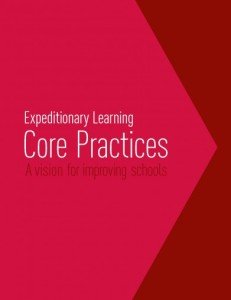 State Standards in math and English are accelerating the trend as schools overhaul curricula to meet tougher academic guidelines. Under the Common Core State Standards, students will be asked to spend more time learning certain math concepts and will skip others. The idea is to give them a stronger foundation for algebra.
State Standards in math and English are accelerating the trend as schools overhaul curricula to meet tougher academic guidelines. Under the Common Core State Standards, students will be asked to spend more time learning certain math concepts and will skip others. The idea is to give them a stronger foundation for algebra.
Small nonprofits, education technology startups, and companies that have never produced educational content are creating learning apps and even full curricula that schools can use in addition to—or in place of—their old textbooks. When New York sought proposals for companies to create a statewide curriculum that matched the new standards, a key requirement was that any bidder had to offer the materials free online. But giving away materials online meant losing potentially lucrative funding streams from selling materials to other states and districts. And the big publishers would have required more money, at least $80 million for an elementary reading curriculum, for instance, not the less than $8 million New York paid.
“This is an Open Educational Resource, (OER) (see “Open Educational Resource” above) so it’s a new breed of publisher,” said Scott Hartl, president and CEO of New York City-based Expeditionary Learning, which, prior to its curriculum contract with New York, focused mainly on running a growing network of schools in New York and other states. The organization won a contract for $1.7 million from New York State to develop an English curriculum for grades three through five. A for-profit Boston-based company, Public Consulting Group (PCG), which provides schools with data services and advice on how to turn around struggling schools, won a $7.3 million New York contract to write an English curriculum for high school. (The company hired Expeditionary Learning to write the curriculum for grades six through eight.)
New York and other states. The organization won a contract for $1.7 million from New York State to develop an English curriculum for grades three through five. A for-profit Boston-based company, Public Consulting Group (PCG), which provides schools with data services and advice on how to turn around struggling schools, won a $7.3 million New York contract to write an English curriculum for high school. (The company hired Expeditionary Learning to write the curriculum for grades six through eight.)
The money came from a federal grant New York won in the Obama administration’s “Race to the Top” competition. Materials have been produced in fits and starts, with some of the units finished by last spring and others still to come later in the year.
The new models are supposed to provide cost savings for schools and districts since they rely heavily on OER which are found-online articles and materials that are downloadable from the Internet 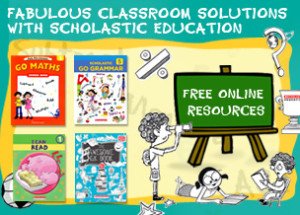 instead of pricier textbooks. But adopting the state curricula won’t be free, as districts and schools are already finding. Schools still will have to buy sets of novels and math materials, such as individual dry-erase boards for students.
instead of pricier textbooks. But adopting the state curricula won’t be free, as districts and schools are already finding. Schools still will have to buy sets of novels and math materials, such as individual dry-erase boards for students.
The groups and state officials say other states have also expressed interest in using New York’s curricula, meaning big publishers may find fewer buyers for their new Common Core products.
Margery Mayer, president of Scholastic Education said, “But districts are still purchasing Scholastic’s nonfiction books for school libraries and guided readers for small-group lessons.” And Mary Cullinane, Houghton Mifflin Harcourt’s executive vice president of corporate affairs, said the Boston-based company was seeing “steady adoptions and purchases across the country” of its new Common Core products.
Even so, education observers believe the new business models popping up to respond to the Common Core standards represent a turning point in the 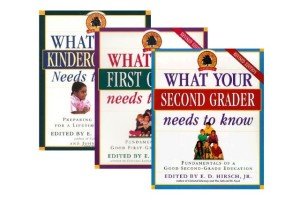 industry. An important incentive driving the nonprofits to become curriculum publishers was not the money, but the chance to spread their ideas about education reform to more schools. Expeditionary Learning is a strong proponent of project-based learning, for example. And Core Knowledge promotes a back-to-the-classics philosophy of education based on the writings of its founder, E. D. Hirsch Jr.
industry. An important incentive driving the nonprofits to become curriculum publishers was not the money, but the chance to spread their ideas about education reform to more schools. Expeditionary Learning is a strong proponent of project-based learning, for example. And Core Knowledge promotes a back-to-the-classics philosophy of education based on the writings of its founder, E. D. Hirsch Jr.
“They’re just really focused on having that idea spread. I know that they loved the idea of having the program online for free,” said Lisa Hansel, a spokeswoman for Core Knowledge. “They were planning on putting it online for free anyway.”
AASL & AECT CURRICULUM STANDARDS
“National content standards,” “state standards,” and “information literacy skills” terminology may vary, but all have common components relating to information literacy. 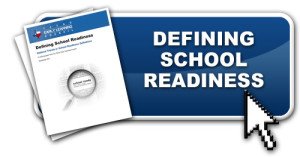
Information literacy skills are critical to several of the “National Education Goals” outlined in the Goals 2000: Educate America Act, particularly in the act’s aims to increase “school readiness,” “student achievement and citizenship,” and “adult literacy and lifelong learning.” Of specific relevance are the “focus on lifelong learning, the ability to think critically, and on the use of new and existing information for problem solving”, all of which are important components of information literacy.
Nine Standards of Information Literate Students
In 1998, the American Association of School Librarians and the Association for Educational Communications and Technology published “Information Literacy Standards for Student Learning”, which identified nine standards that librarians and teachers in K-12 schools could use to describe information literate students and define the relationship of information literacy to independent learning and social responsibility:
- Standard One: The student who is information literate accesses information efficiently and effectively.
- Standard Two: The student who is information literate evaluates information critically and competently.
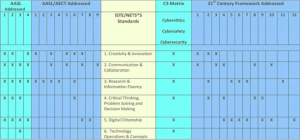
- Standard Three: The student who is information literate uses information accurately and creatively.
- Standard Four: The student who is an independent learner is information literate and pursues information related to personal interests.
- Standard Five: The student who is an independent learner is information literate and appreciates literature and other creative expressions of information.
- Standard Six: The student who is an independent learner is information literate and strives for excellence in information seeking and knowledge generation.
- Standard Seven: The student who contributes positively to the learning community and to society is information literate and recognizes the importance of information to a democratic society.
- Standard Eight: The student who contributes positively to the learning community and to society is information literate and practices ethical behavior in regard to information and information technology.
- Standard Nine: The student who contributes positively to the learning community and to society is information literate and participates effectively in groups to pursue and generate information.
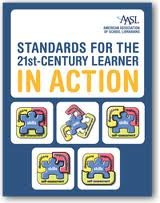 In 2007 AASL expanded and restructured the standards that school librarians should strive for in their teaching. These were published as “Standards for the 21st Century Learner” and address several literacies: information, technology, visual, textual, and digital. These aspects of literacy were organized within four key goals: that “learners use of skills, resources, & tools” to “inquire, think critically, and gain knowledge”; to “draw conclusions, make informed decisions, apply knowledge to new situations, and create new knowledge”; to “share knowledge and participate ethically and productively as members of our democratic society”; and to “pursue personal and aesthetic growth.”
In 2007 AASL expanded and restructured the standards that school librarians should strive for in their teaching. These were published as “Standards for the 21st Century Learner” and address several literacies: information, technology, visual, textual, and digital. These aspects of literacy were organized within four key goals: that “learners use of skills, resources, & tools” to “inquire, think critically, and gain knowledge”; to “draw conclusions, make informed decisions, apply knowledge to new situations, and create new knowledge”; to “share knowledge and participate ethically and productively as members of our democratic society”; and to “pursue personal and aesthetic growth.”
In 2000, the Association of College and Research Libraries (ACRL), a division of the American Library Association (ALA), released “Information Literacy Competency Standards for Higher Education,” describing five standards and numerous performance indicators considered best practices for the implementation and assessment of postsecondary information literacy programs.
Five Standards of Postsecondary Information Literacy:
- Standard One: The information literate student determines the nature and extent of the information needed.
- Standard Two: The information literate student accesses needed information effectively and efficiently.
- Standard Three: The information literate student evaluates information and its sources critically and incorporates selected information into his or her knowledge base and value system.
- Standard Four: The information literate student, individually or as a member of a group, uses information effectively to accomplish a specific purpose.
- Standard Five: The information literate student understands many of the economic, legal, and social issues surrounding the use of information and accesses and uses information ethically and legally.
These standards are meant to span from the simple to more complicated, or in terms of Bloom’s Taxonomy of Educational Objectives (see K-12 Education), from the “lower order” to the “higher order.” Lower order skills would involve for instance being able to use an online catalog to find a book relevant to an information need in an academic library. Higher order skills would involve “critically evaluating” and “synthesizing information” from multiple sources into a “coherent interpretation or argument.”
CURRICULUM DEVELOPMENT CYCLE
A curriculum development structured should delineate the philosophy, goals, objectives, student competencies, learning experiences, instructional strategies, resources and assessments that comprise a specific educational program. Additionally, it should represent an articulation of what students should know and be able to do and supports teachers in knowing how to achieve these goals.
The development of an effective curriculum is a multi-step, ongoing and cyclical process. The process progresses from evaluating the existing program, to designing an improved program, to implementing the new program and back to evaluating the revised program. This process is carried out in a planned and systematic manner.
The most commonly used curriculum structure is a Graded Structure that organizes objectives by the grade in which a student is enrolled. A graded structure is an organization by unit that groups objectives by main topics and may or may not be of differing difficulty and is most commonly used for middle or high school courses. One of the most important roles of grade-level and course objectives is assuring smooth transitions and curricular coordination among levels, particularly between elementary schools and middle schools, and between middle schools and high schools.
An organizational structural asks essential questions that centers the curriculum on understandings. This method develops assessments and determines criteria of acceptable performance.
Curriculum Development Process
Planning
- Plan all phase of the development process
- Identifying the project personnel and what their duties will be

- Identify the project manager
- Define the development and implementation phase process
- Identifying key issues and research in the subject curriculum
- Assess needs
Articulating and Developing Curriculum Format
- Program Philosophy
- Beliefs and Protocols
- Define K-12 Program, Grade-Level and Course Goals
- Description of Subject Learning Environment
- Subject Area Standards
- Assessment
- Materials and Resources
- School to Career Connection
- Information Technology Connection
Developing Grade-Level Course Objectives and Competency Structure
- Evaluate a Graded organizational structure that organizes objectives by the grade in which a student is enrolled.
- Evaluate a Strand organization structure which places all objectives for a specific topic together in a sequential order without regard to specific grade.
- Evaluate a Sequential organization which outlines objectives in a continuous chain without regard for grade level and allows for individual student progress along a continuum of skills and experiences.
Identifying Resource Materials to Assist with Program Implementation
- Identify instructional strategies and resources called Open Educational Resources (OER) to help meet a particular objective or set of objectives.
Assessing and Measuring Student Performance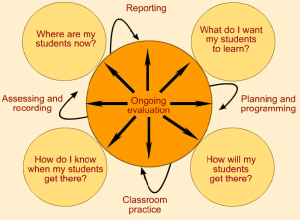
- Develop grade-level criteria tests
- Develop performance based tasks
- Develop course final examinations
- Develop common grade-level course criteria assessments
- Develop clear performance standards
Implementing the New Program into Practice
- Launch pilot program
- Teacher awareness of the new curriculum
- Teacher responsibility sessions
- Teacher classroom conformity time elements
- Curriculum developer evaluation of in-classroom pilot implementation
- Launch actual curriculum program
Evaluating and Updating the New Program
- eBook evolution updates
- Achievement identification of materials, activities, assessments and current student work
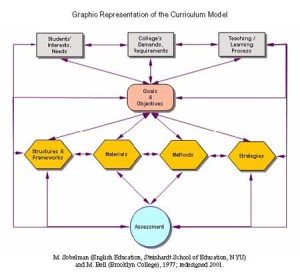 Determining the Success of the New Program
Determining the Success of the New Program
- Pilot effectiveness evaluation and impact of the new program
- Periodically review of actual program strength, weakness and needs perception data
- Evaluation of eBook, materials, or objective preferences that are not working effectively
- Teacher evaluation of assessments, performance tasks, student work, lessons and instructional practices related to the curriculum
- Ongoing grade-level and course criterion-referenced exam data
- Course enrollments particularly by level in middle and high schools
- SAT and AP results
Curriculum Documentation
- Information materials that document the curriculum should be maintained in digital content such as text, forms, tables, diagrams, graphics, images, audio, and video.
- Content items should be stored and managed in a reliable server repository that saves each successive version and a traceable history of changes as material is authored, corrected or revised, and updated.
- Content items should be assembled and published in presentations that suit the various needs of teachers, students, administrators, parents.
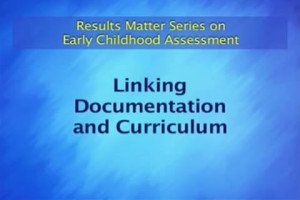
- Multiple presentation modes should be supported, including hard copy print-on-demand, email attachments, Adobe PDF, Microsoft Office documents, and online web pages.
- Online documents should be cataloged, indexed, and cross-referenced to facilitate user searching and retrieval for access to both summary and detailed curriculum documentation as well as for incorporation of curriculum information into personalized teaching/learning material with annotations, ad hoc reports, and studies.
Sample Curriculum Development Cycle
The multiyear curriculum development cycle process should be organized by a master schedule which allows for systematic research, evaluations, revisions, implementation and refinement. Each instructional program should be scheduled on a three to five-year program review cycle, allowing for a balanced student and staff introduction of new materials as well as long-range budgetary planning and funding.
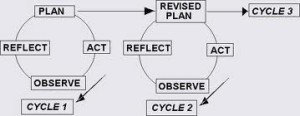 Years 1 and 2 may be combined, depending on the amount of writing and revisions that must be done. Years 4 and 5, Refinement, Documentation and Evaluation, include the continuing development of appropriate instructional strategies and activities. Most evaluation and revision work is done at the beginning of the cycle, with three years of implementation. Curriculum evaluators should be composed of teachers, administrators, and K-12 curriculum directors.
Years 1 and 2 may be combined, depending on the amount of writing and revisions that must be done. Years 4 and 5, Refinement, Documentation and Evaluation, include the continuing development of appropriate instructional strategies and activities. Most evaluation and revision work is done at the beginning of the cycle, with three years of implementation. Curriculum evaluators should be composed of teachers, administrators, and K-12 curriculum directors.
The five-year cycle is defined as follows:
Year 1: Review and Analysis
- Research, review and evaluate existing curriculum
- Conduct an assessment of needs regarding content, strategies, and evaluation by student, teacher, parent, and administrator surveys
- Data consultation to assess student learning needs including results of standardized and locally developed tests, report cards, portfolios, and other evidence of student achievements
- Resources availability assessment for curriculum development and implementation
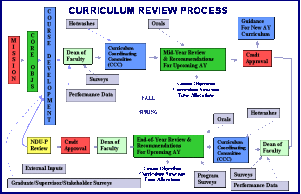
- Federal and state regulation complicity review
- Prioritize curriculum needs and time line specification for curriculum development
- Current field research review and recommendations of professional organizations
- Summarize strengths and weaknesses of current curriculum
- Order sample materials from two or three publishers whose materials most closely match envisioned curriculum
At the end of Year 1, the following documents should be produced:
- Philosophy, mission, goal statements
- Written recommendations as to where existing curriculum is weak
- Evaluation of existing program course
- Content description
- Written development objectives (in matrix form)
- Written evaluations of textbooks designed for teachers to use as evaluation guides during the following school year
Year 2: Program Development
- Write new curriculum
- Rewrite or develop performance objectives and necessary alignment documents to show correspondence with state objectives, testing, measurement methods, and instructional strategies and materials
- Revise and rewrite
- New curriculum and recommended materials are circulated and feedback is gathered and tabulated
- When this phase is complete, a recommendation for new textbooks and materials is made
- Develop and purchase instructional materials
- Field test materials and curriculum
Year 3: Implementation
- Implement new curriculum and materials
- Launch Pilot Program

- In-service is conducted to ensure that teachers understands the new curriculum and can implement the materials into actual classroom practice.
- Feedback is gathered from teachers to evaluate new materials. Instructional strategies may be developed that support implementation.
- Launch actual curriculum program
Year 4: Practice and Documentation
- Refine and modify
- Teacher and parent surveys or other data collection methods may be begun in preparation for the Evaluation Year.
- Program and curriculum update evaluation
- eBook evolution update evaluation
- Identify achievement of materials, activities, assessments and current student work
- Program effectiveness and impact evaluation
- Develop program strength, weakness and needs perception data
- Identify and evaluate eBook, materials or objective preferences that are not working effectively
- Document teacher evaluation of assessments, performance tasks, student work, lessons and instructional practices related to the curricula
- Evaluate ongoing grade-level and course criterion-referenced exam data
- Evaluate course enrollments (by level in middle and high schools)
- Evaluate SAT and AP results
- Prepare for evaluation year in program areas
Yearly Budget Support for Curriculum Textbooks and Materials
In anticipation of curriculum cycle expenditures yearly budget should contain a fixed amount per pupil in each textbook accounts that will be used to purchase newly reviewed and approved textbooks and materials to support curriculum implementation.
THE EIGHT LEARNING STYLES
The following are the eight learning styles that are used in the progressive “FIZZ” project (see Blended-based eLearning). With the implementation of the Common Core all new curriculum should be developed to accommodate these seven learning styles. For example, “interpersonal intelligence” is best exemplified by collaborative-based learning (see: K-12 Learning & Teaching Platforms) and “spatial intelligence” is best accomplished with definitive images. Since in any classroom you have a very diverse group of students who all learn in different ways and all have different strengths the trick is to accommodate all learning styles in the same curriculum.
- Linguistic intelligence (“word smart” they learn by writing and reading)
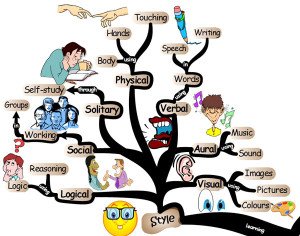
- Logical-mathematical intelligence (“number/reasoning smart)
- Spatial intelligence (“picture smart” they learn from images)
- Bodily-Kinesthetic (“body smart” they have to be moving around to learn)
- Musical intelligence (“music smart” they learn by listening to or creating music)
- Interpersonal intelligence (“people smart” they students are the collaborators they work well with other people)
- Intra personal intelligence (“self-smart” they student work best by themselves)
- Naturalist intelligence (“nature smart” work best when interacting with nature)
The goal is to create lessons that hit as many of these learning styles as possible so we obtain the highest level of rigor that we can offer our students.
COMMON CORE CURRICULUM DEVELOPMENT STANDARDS
Overview
In 2010, standards were released for English language arts and mathematics. Though standards have not yet been developed for science or social studies, the Next Generation Science Standards are in the process of being developed. They are not directly related to the Common Core, but their content can be cross-connected to the mathematical and English Language Arts standards within the  Common Core.
Common Core.
The Hechinger Report recently (10/15/2013) included the following in one of its articles “Six Ways Common Core changes English and Math Classrooms.”
Before
English classes concentrated on literature, like Huckleberry Finn and Grate Gatsby;
Common Core
English classes include a mix of literature and informational texts, like speeches and articles;
Before
Students asked about personal reactions and experiences in response to literature;
Common Core
Student must base arguments and essays on evidence from the reading, not their own opinions or experiences;
Before
Focus on offering students books at their reading level, known as “just right” texts;
Common Core
All students must read the same “complex” text, whether or not it is beyond their reading level;
Before
Math classes covered multiple topics in the course of a grade, with frequent reviews;
Common Core
The number of topics is reduced, so that students move through arithmetic, subtraction and other concepts more slowly; less review;
Before
In many schools, Algebra I was taught by 8th grade;
Common Core
Algebraic concepts included earlier, but in most cases Algebra I not taught until high school;
Before
Memorization of formulas and practices was prioritized;
Common Core
Memorization is supposed to be coupled with deeper understanding of math concepts and applying formulas in new ways.
ENGLISH LANGUAGE ARTS & LITERACY IN HISTORY/SOCIAL STUDIES, SCIENCE, AND TECHNICAL SUBJECTS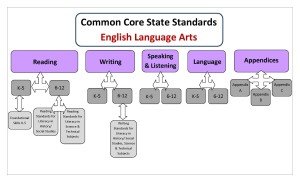
(The following is from the Common Core State Standards Initiative)
Overview
The stated goal of the English & Language Arts and Literacy in History/Social Studies, Science, and Technical Subjects standards is to ensure that students are college and career ready in literacy no later than the end of high school. There are five key components to the standards for English and Language Arts: Reading, Writing, Speaking and Listening, Language, and Media and Technology. The essential components and breakdown of each of these key points within the standards are as follows:
Reading
- As students advance through each grade, there is an increased level of complexity to what students are expected to read and there is also a progressive development of reading comprehension so that students can gain more from what they read.
- There is no reading list to accompany the reading standards. Instead, students are simply expected to read a range of classic and contemporary literature as well as challenging informative texts from an array of subjects. This is so that students can acquire new knowledge, insights, and consider varying perspectives as they read. Teachers, school districts, and states are expected to decide on the appropriate curriculum, but sample texts are included to help teachers, students, and parents prepare for the year ahead.
- There is some critical content for all students — classic myths and stories from around the world, foundational U.S. documents, seminal works of American literature, and the writings of Shakespeare — but the rest is left up to the states and the districts.
Standards for Reading Informational Text, Literature, History and Social Studies
- Key Ideas and Details
- Craft and Structure
- Integration of Knowledge and Ideas
- Range of Reading and Level of Text Complexity
- Time, Continuity and Change
- Individuals, Groups and Institutions
- Power, Authority and Governance
Writing
- The driving force of the writing standards is logical arguments based on claims, solid reasoning, and relevant evidence. The writing also includes opinion writing even within the K–5 standards.
- Short, focused research projects, similar to the kind of projects students will face in their careers as well as long-term, in-depth research is another important piece of the writing standards. This is because written analysis and the presentation of significant findings is critical to career and college readiness.
- The standards also include annotated samples of student writing to help determine performance levels in writing arguments, explanatory texts, and narratives across the grades.
Writing Standards
- Text Type and Purpose
- Production and Distribution of Writing
- Research to Build and Present Knowledge
Speaking and Listening
- Although reading and writing are the expected components of an ELA curriculum, standards are written so that students gain, evaluate, and present complex information, ideas, and evidence specifically through listening and speaking.
- There is also an emphasis on academic discussion in one-on-one, small-group, and whole-class settings, which can take place as formal presentations as well as informal discussions during student collaboration.
Language
- Vocabulary instruction in the standards takes place through a mix of conversations, direct instruction, and reading so that students can determine word meanings and can expand their use of words and phrases.
- The standards expect students to use formal English in their writing and speaking, but also recognize that colleges and 21st century careers will require students to make wise, skilled decisions about how to express themselves through language in a variety of contexts.
- Vocabulary and conventions are their own strand because these skills extend across reading, writing, speaking, and listening.
Reading Standards for Language
- Vocabulary Acquisition and Use
- Foundation Fluency
Media and Technology
- Since media and technology are intertwined with every student’s life and in school in the 21st century, skills related to media use, which includes the analysis and production of various forms of media, are also included in these standards.
Science Standards
- Physical Science
- Earth and Space Sciences
- Structure and Properties of Matter
- Science of Inquiry
- Unifying Concepts
- Science, Technology, Engineering and Math (STEM)

CURSIVE AND KEYBOARDING
The standards do not mandate the teaching of cursive handwriting, although states are free either to add a cursive requirement or to permit individual school districts to require it. The standards include instruction in keyboarding.
MATHEMATICS STANDARDS
The stated goal of the Mathematics Standards is to achieve greater focus and coherence in the curriculum. This is largely in response to the criticism that American mathematics curricula are “a mile wide and an inch deep.”
The Mathematics Standards include Standards for Mathematical Practice and Standards for Mathematical Content.
Mathematical Practice
The Standards mandate that eight principles of mathematical practice be taught:
- Make sense of problems and persevere in solving them.
- Reason abstractly and quantitatively.
- Construct viable arguments and critique the reasoning of others.
- Model with mathematics.
- Use appropriate tools strategically.
- Attend to precision.
- Look for and make use of structure.
- Look for and express regularity in repeated reasoning.
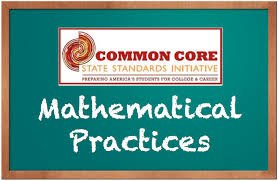 The practices are adapted from the five Process Standards of the National Council of Teachers of Mathematics and the five strands of proficiency in the National Research Council’s “Adding It Up” report. These practices are to be taught in every grade from kindergarten to twelfth grade. Details of how these practices are to be connected to each grade level’s mathematics content are left to local implementation of the Standards.
The practices are adapted from the five Process Standards of the National Council of Teachers of Mathematics and the five strands of proficiency in the National Research Council’s “Adding It Up” report. These practices are to be taught in every grade from kindergarten to twelfth grade. Details of how these practices are to be connected to each grade level’s mathematics content are left to local implementation of the Standards.
As an example of mathematical practice, here is the full description of the sixth practice:
6 Attend to Precision
Mathematically proficient students try to communicate precisely to others. They try to use clear definitions in discussion with others and in their own reasoning. They state the meaning of the symbols they choose, including using the equal sign consistently and appropriately. They are careful about specifying units of measure, and labeling axes to clarify the correspondence with quantities in a problem. They calculate accurately and efficiently, express numerical answers with a degree of precision appropriate for the problem context. In the elementary grades, students give carefully formulated explanations to each other. By the time they reach high school they have learned to examine claims and make explicit use of definitions.
reasoning. They state the meaning of the symbols they choose, including using the equal sign consistently and appropriately. They are careful about specifying units of measure, and labeling axes to clarify the correspondence with quantities in a problem. They calculate accurately and efficiently, express numerical answers with a degree of precision appropriate for the problem context. In the elementary grades, students give carefully formulated explanations to each other. By the time they reach high school they have learned to examine claims and make explicit use of definitions.
Mathematical Content
The Standards lay out the mathematics content that should be learned at each grade level from kindergarten to Grade 8 (age 13-14), as well as the mathematics to be learned in high school. The Standards do not dictate any particular pedagogy or what order topics should be taught within a particular grade level. Mathematical content is organized in a number of domains. At each grade level there are several standards for each domain, organized into clusters of related standards. (See examples below.)
Four Domains Grades K though 5
Four domains are included in each of the six grades from kindergarten (age 5-6) to fifth grade (age 10-11):
- Operations and Algebraic Thinking;
- Number and Operations in Base 10;
- Measurement and Data;
- Geometry.
Kindergarten also includes the domain Counting and Cardinality. Grades 3 to 5 also include the domain Number and Operations–Fractions.
Four Domains Grades 6 through 8
Four domains are included in each of the Grades 6 through 8:
- The Number System;
- Expressions and Equations;
- Geometry;
- Statistics and Probability.
Grades 6 and 7 also include the domain Ratios and Proportional Relationships. Grade 8 includes the domain Functions.
In addition to detailed standards (of which there are 21 to 28 for each grade from kindergarten to eighth grade), the Standards present an overview of “critical areas” for each grade. (See examples below.)
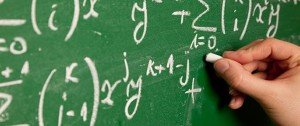 In high school (Grades 9 to 12) the Standards do not specify which content is to be taught at each grade level. Up to Grade 8, the curriculum is integrated; students study four or five different mathematical domains every year. The Standards do not dictate whether the curriculum should continue to be integrated in high school with study of several domains each year (as is done in other countries, as well as New York and Georgia), or whether the curriculum should be separated out into separate year-long algebra and geometry courses (as has been the tradition in most U.S. states). An appendix to the Standards describes four possible pathways for covering high school content (two traditional and two integrated), but states are free to organize the content any way they want.
In high school (Grades 9 to 12) the Standards do not specify which content is to be taught at each grade level. Up to Grade 8, the curriculum is integrated; students study four or five different mathematical domains every year. The Standards do not dictate whether the curriculum should continue to be integrated in high school with study of several domains each year (as is done in other countries, as well as New York and Georgia), or whether the curriculum should be separated out into separate year-long algebra and geometry courses (as has been the tradition in most U.S. states). An appendix to the Standards describes four possible pathways for covering high school content (two traditional and two integrated), but states are free to organize the content any way they want.
Six Conceptual Categories High School Level
Six Conceptual Categories of content to be covered at the high school level:
- Numbers and quantity
- Algebra
- Functions
- Modeling
- Geometry
- Statistics and probability
Some topics in each category are indicated only for students intending to take more advanced, optional courses such as calculus, advanced statistics, or discrete mathematics. Even if the traditional sequence is adopted, functions and modeling are to be integrated across the curriculum, not taught as separate courses. In fact, modeling is also a Mathematical Practice (see above), and is meant to be integrated across the entire curriculum beginning in kindergarten. The modeling category does not have its own standards; instead, high school standards in other categories which are intended to be considered part of the modeling category are indicated in the Standards with a star symbol.
Each of the six high school categories includes a number of domains. For example, the “number and quantity” category contains four domains: the real number system; quantities; the complex number system; and vector and matrix quantities. The “vector and matrix quantities” domain is reserved for advanced students, as are some of the standards in “the complex number system”.
Examples of Mathematical Content
Second grade example: In the second grade there are 26 standards in four domains. The four critical areas of focus for second grade are (1) extending understanding of base-ten notation; (2) building fluency with addition and subtraction; (3) using standard units of measure; and (4) describing and analyzing shapes. Below are the second grade standards for the domain of “operations and algebraic thinking” (Domain 2.OA). This second grade domain contains four standards, organized into three clusters:
1. Represent and solve problems involving addition and subtraction. Use addition and subtraction within 100 to solve one- and two-step word problems involving situations of adding to, taking from, putting together, taking apart, and comparing, with unknowns in all positions, e.g., by using drawings and equations with a symbol for the unknown number to represent the problem.
2. Add and subtract within 20. Fluently add and subtract within 20 using mental strategies. By end of Grade 2, know from memory all sums of two one-digit numbers.
3. Work with equal groups of objects to gain foundations for multiplication. Determine whether a group of objects (up to 20) has an odd or even number of members, e.g., by pairing objects or counting them by 2s; write an equation to express an even number as a sum of two equal addends.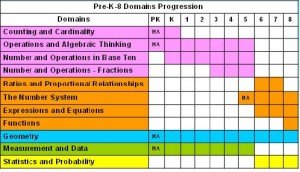
4. Use addition to find the total number of objects arranged in rectangular arrays; with up to 5 rows and up to 5 columns; write an equation to express the total as a sum of equal addends.
Domain example: As an example of the development of a domain across several grades, here are the clusters for learning fractions (Domain NF, which stands for “Number and Operations—Fractions”) in Grades 3 through 6. Each cluster contains several standards (not listed here):
Grade 3:
- Develop an understanding of fractions as numbers.
Grade 4:
- Extend understanding of fraction equivalence and ordering.
- Build fractions from unit fractions by applying and extending previous understandings of operations on whole numbers.
- Understand decimal notation for fractions, and compare decimal fractions.
Grade 5:
- Use equivalent fractions as a strategy to add and subtract fractions.
- Apply and extend previous understandings of multiplication and division to multiply and divide fractions.
In Grade 6, there is no longer a “number and operations—fractions” domain, but students learn to divide fractions by fractions in the number system domain.
High school example: As an example of a high school category, here are the domains and clusters for algebra. There are four algebra domains (in bold below), each of which is broken down into as many as four clusters (bullet points below). Each cluster contains one to five detailed standards (not listed here). Starred standards, such as the Creating Equations domain (A-CED), are also intended to be part of the modeling category.
Seeing Structure in Expressions (A-SSE)
- Interpret the structure of expressions
- Write expressions in equivalent forms to solve problems
Arithmetic with Polynomials and Rational Functions (A-APR)
- Perform arithmetic operations on polynomials
- Understand the relationship between zeros and factors of polynomials
- Use polynomial identities to solve problems
- Rewrite rational expressions
Creating Equations.★ (A-CED)
- Create equations that describe numbers or relationships
Reasoning with Equations and Inequalities (A-REI)
- Understand solving equations as a process of reasoning and explain the reasoning
- Solve equations and inequalities in one variable
- Solve systems of equations
- Represent and solve equations and inequalities graphically
As an example of detailed high school standards, the first cluster above is broken down into two standards as follows:
Interpret the structure of expressions
1. Interpret expressions that represent a quantity in terms of its context.★
a. Interpret parts of an expression, such as terms, factors, and coefficients.
b. Interpret complicated expressions by viewing one or more of their parts as a single entity. For example, interpret P(1+r)n as the product of P and a factor not depending on P.
2. Use the structure of an expression to identify ways to rewrite it. For example, see x4 – y4 as (x2)2 – (y2)2, thus recognizing it as a difference of squares that can be factored as (x2 – y2)(x2 + y2).
COLLECTIONS OF SHORT-FORM SUPPLEMENT COLLECTIONS
(The Following is an abstract from “Games for a Digital Age”)
Short-form supplements are being used more frequently in curriculum, but they can be difficult for teachers to find and apply to fast moving classroom situations. The most successful efforts to bring  supplements into schools have combined supplements with other learning objects into collections. We distinguish three types of collections by the manner in which the teacher or student accesses specific objects.
supplements into schools have combined supplements with other learning objects into collections. We distinguish three types of collections by the manner in which the teacher or student accesses specific objects.
Digital Repositories
Curated digital repositories are libraries of short-form games and other learning objects that consist of extensive product lines and cover large areas of curriculum. These libraries have structured metadata that facilitate search, and their objects are typically aligned to standards. BrainPOP’s repository (described earlier) is in 20% of all schools in the United States and is designed to be as flexible as possible to fit the needs of a classroom teacher. As General Manager of BrainPOP Din Heiman describes, “The story of BrainPOP is all about appealing to teachers.”
 PBS LearningMedia offers a repository of tens of thousands of classroom-ready, digital resources searchable by content area and grade level, including content drawn from over 1,500 public media producers and 350 local stations. The collection includes resources from the PBS series NOVA, Frontline, American Experience, The Electric Company, and Sid the Science Kid as well as resources funded by NASA, the National Science Foundation, the National Institutes of Health, the Department of Education, the Library of Congress, National Public Radio and the National Archives.
PBS LearningMedia offers a repository of tens of thousands of classroom-ready, digital resources searchable by content area and grade level, including content drawn from over 1,500 public media producers and 350 local stations. The collection includes resources from the PBS series NOVA, Frontline, American Experience, The Electric Company, and Sid the Science Kid as well as resources funded by NASA, the National Science Foundation, the National Institutes of Health, the Department of Education, the Library of Congress, National Public Radio and the National Archives.
Recently digital content from Annenberg Learner, part of the Annenberg Foundation, was added to the collection. The collection is aligned to the Common Core State Standards and is available free to all preK-16 classrooms. It includes videos and interactives, audio and photos, and in-depth 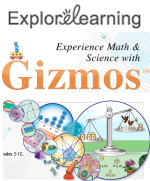 lesson plans. PBS also offers professional development courses related to the collection and the ability to customize it for schools and districts for seamless integration into local systems.
lesson plans. PBS also offers professional development courses related to the collection and the ability to customize it for schools and districts for seamless integration into local systems.
Explore Learning has an extensive library of interactive, online math and science simulations called “Gizmos” for grades 3-12. These called Gizmos are designed to supplement existing curricula and are correlated to state standards, connected to over 200 textbooks, and include more than 450 interactives searchable by standard, grade, textbook, and topic. Gizmos are currently being used in all 50 states and have been the subject of a number of research studies. ExploreLearning offers training and professional development services to assist teachers in using the collection. The company has also created Reflex, an online game-based system that helps students learn basic math facts.
At the heart of gaming is the increasing difficulty implicit as players move to new levels. An adaptive engine manages this progression through a game, personalizing the experience and/or providing students with material that is challenging but that the user is capable of solving. According to Josh Cohen, managing partner of City Light Capital, adaptive learning platforms“… take student data and give feedback so that the student is essentially being quizzed and seeing what they get right and what they get wrong. Gaming does two things, it is a massive data aggregator and it is really fun and engaging.”
Fastt Math Next Generation teaches math fact fluency, using an adaptive technology that creates individualized learning progressions with embedded assessments to help students learn math skills. Teachers are provided with dashboards that allow for ongoing progress monitoring. Each student receives diagnostic assessments to measure current math fact skills and is then provided with 10-minute daily sessions of adaptive instruction in either English or Spanish. The program targets both accuracy and speed using a research-validated algorithm. Fastt Math is aligned to the common core.
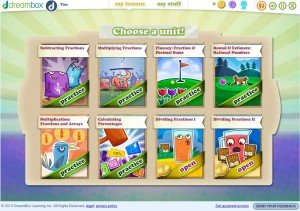 Dreambox works with three central elements: a robust curriculum, an intelligent adaptive platform, and a highly engaging environment. According to their CEO, Jessie Woolley-Wilson, they do not consider themselves a gaming company because their focus is on learning as the primary objective, whereas for many gaming companies, fun comes first. Dreambox use separate rewards, but they contain learning activities such as more math games. This provider also does not try to hide the learning involved, instead leveraging the fact that kids are extremely motivated by their own mastery and achievement. Dreambox has also developed an intelligent, standards-aligned adaptive platform that collects data with every click to demonstrate what a student knows and does not know and build a personal learning path. The path is not tied to age or grade and is not linear for all students. Dreambox focused on what is viewed as the “hot” area of K-2, but now has expanded
Dreambox works with three central elements: a robust curriculum, an intelligent adaptive platform, and a highly engaging environment. According to their CEO, Jessie Woolley-Wilson, they do not consider themselves a gaming company because their focus is on learning as the primary objective, whereas for many gaming companies, fun comes first. Dreambox use separate rewards, but they contain learning activities such as more math games. This provider also does not try to hide the learning involved, instead leveraging the fact that kids are extremely motivated by their own mastery and achievement. Dreambox has also developed an intelligent, standards-aligned adaptive platform that collects data with every click to demonstrate what a student knows and does not know and build a personal learning path. The path is not tied to age or grade and is not linear for all students. Dreambox focused on what is viewed as the “hot” area of K-2, but now has expanded 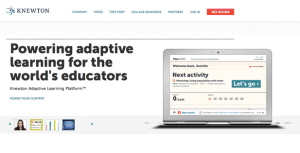 up to grade 5.
up to grade 5.
Knewton is an online adaptive learning platform that is currently designed to support college level students in developmental math courses. The company’s main focus is on the backend, developing a sophisticated algorithm that allows for individualization. The company does not appear to be developing much content, but rather is outsourcing that job to other organizations. Recently Knewton and Pearson announced a partnership that should provide access to the K-12 market.
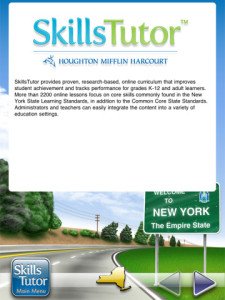 Skills Tutor is a division of Houghton Mifflin Harcourt. It provides an online supplemental adaptive engine for math, reading, writing, language, science, and workforce readiness for K-16. It can be used as a teacher-aided instructional tool or as a one-on-one tutoring resource with minimal guidance. Skills Tutor provides differentiated instruction, diagnostic testing, prescriptive assignments, and automatic reporting. It also has a management system that enables teachers to assign lessons by standard and to monitor progress on real-time usage. The program can be used with smart mobile devices and aligns to state and national standards.
Skills Tutor is a division of Houghton Mifflin Harcourt. It provides an online supplemental adaptive engine for math, reading, writing, language, science, and workforce readiness for K-16. It can be used as a teacher-aided instructional tool or as a one-on-one tutoring resource with minimal guidance. Skills Tutor provides differentiated instruction, diagnostic testing, prescriptive assignments, and automatic reporting. It also has a management system that enables teachers to assign lessons by standard and to monitor progress on real-time usage. The program can be used with smart mobile devices and aligns to state and national standards.
MangaHigh has created a large collection of free math games that were originally developed for the U.K. market and are now offered in the United States.  MangaHigh’s most powerful game is Prodigi, a mathematics adaptive engine that features thousands of math problems with solutions and hints that adapt to each student’s ability and learning speed. Students, teachers and parents can customize Prodigi by skipping items that have already been mastered in the classroom, or focus on areas that need specific attention. If necessary, students can use Prodigi independently, as it guides the student through the math curriculum in a logical order. Throughout the puzzle games in MangaHigh, students are able to rank their performance and teachers are provided with data on student proficiency.
MangaHigh’s most powerful game is Prodigi, a mathematics adaptive engine that features thousands of math problems with solutions and hints that adapt to each student’s ability and learning speed. Students, teachers and parents can customize Prodigi by skipping items that have already been mastered in the classroom, or focus on areas that need specific attention. If necessary, students can use Prodigi independently, as it guides the student through the math curriculum in a logical order. Throughout the puzzle games in MangaHigh, students are able to rank their performance and teachers are provided with data on student proficiency.
Integrated Digital Curricula
As comprehensive core curricula move from print to digital, many supplemental materials including games are embedded as components. Digital curricula are designed for networked classrooms where every student has a computing device. These sophisticated curricula and connected technology elements are aligned to standards, may be personalized, generally allow searching for specific topics by level of difficulty, and form a foundation for the broader acceptance of learning games in the classroom.
Time To Know is a comprehensive digital teaching platform that contains integrated core curriculum in reading and math for the upper elementary grades. Digital teaching platforms are designed to operate in one-to-one classrooms, deliver a personalized curriculum to every student, and provide support for the teacher to manage all classroom activities. The Time To Know curriculum 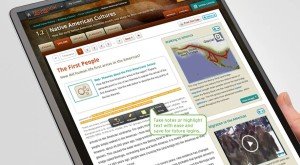 contains open-ended explorations, practice environments, games, videos and other digital learning objects.
contains open-ended explorations, practice environments, games, videos and other digital learning objects.
The Discovery Education Science Techbooks are core curriculum digital products for elementary and middle school science that have been adopted in a number of states including Florida, Texas, and Oregon. A “techbook” contains a large collection of online learning tools and games ranging from videos, quizzes, animations, simulations, and puzzles, all aligned to standards, made completely searchable, and organized into a complete K – 8 science curriculum. Discovery won the 2012 CODIE award for the best educational product.
K-12 CURRICULUM RESEARCH
(The following abstract is from “Games for a Digital Age”)
The No Child Left Behind (NCLB) Act requires that schools use federal money only on products and services that have an established research base through “Scientifically Based Research” (SBR). SBR is, in essence, a randomized trial similar to the clinical trials required for pharmaceuticals. In an effort to avoid poor quality evaluations, NCLB designates any type of research that does not meet SBR requirements as being of poor quality.
SBR Challenges
It is important to document the efficacy of any product to be used in schools, but using SBR in the education field is fraught with challenges, and it should be noted that SBR is costly and time-consuming. However, as NCLB now stands, SBR is required on all new products. Any developer of curriculum or supplements needs to understand the complexity and limitations of SBR in order to comply with its requirements.
Among the numerous challenges are the difficulties of randomly assigning subjects to treatment and control groups in a classroom setting and creating a true control group (the equivalent of a “placebo” in a medical setting). Maintaining both treatment and control groups is difficult given the turnover of student populations. The SBR requirement that statistical analysis of quantitative measures be standardized using large samples ignores the risk of finding no effect due to imprecise measurement, misuse of the product, or irrelevant variables in the research environment.
Unfortunately, the requirements of NCLB fail to acknowledge that evaluating different types of products requires different kinds of evaluation design and devalues valid research methods that are useful in ferreting out product effectiveness and supporting product development. Formative evaluation, ad hoc measures, and various quasi-experimental procedures provide useful information about the effectiveness of a new product at relatively low cost, and they can greatly aid in improving the product, even though they lack the putative rigor of SBR. Few products are full-grown at birth, and an iterative, multimodal approach to product evaluation is effective in gathering sufficient enough information about efficacy to guide the design and evolution of a particular product.
K-12 LESSON PLANNING
K-12 Lesson Planning is big business. If you Google the subject over 30 ads pop up offering lesson planning from businesses such as K-12 textbook publishers, independent curriculum developers and K-12 online schools. In addition, enterprising K-12 teachers have been writing and sell lesson plans to other teacher for years. With the advent of the Internet and email it has become a lot easier.
Most textbook publishers provide lesson plans with their curriculum in the form of “teacher note” and “curriculum highlights” but even so teacher have to spend time developing these tools into usefully plans that conform to their teaching styles and student profiles.
For a look how teachers are lesson planning with Common Core (see: K-12 Teaching – Common Core Lesson Planning).
Traditional Lesson Planning Basics
(The following is an abstract on Lesson Planning from Wikipedia)
A lesson plan is a teacher’s detailed description of the course of instruction for one class. A daily lesson plan is developed by a teacher to guide class instruction. Details will vary depending on the preference of the teacher, subject being covered, and the need and/or curiosity of students. There may be requirements mandated by the school system regarding the plan.
Developing a lesson plan
While there are many formats for a lesson plan, most lesson plans contain some or all of these elements, typically in this order:
- Title of the lesson
- Time required completing the lesson
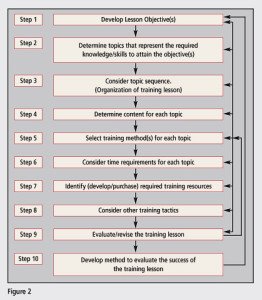
- List of required materials
- List of objectives, which may behavioral objectives (what the student can do at lesson completion) or knowledge objectives (what the student knows at lesson completion)
- The set (or lead-in, or bridge-in) that focuses students on the lesson’s skills or concepts—these include showing pictures or models, asking leading questions, or reviewing previous lessons
- An instructional component that describes the sequence of events that make up the lesson, including the teacher’s instructional input and guided practice the students use to try new skills or work with new ideas
- Independent practice that allows students to extend skills or knowledge on their own
- A summary, where the teacher wraps up the discussion and answers questions
- An evaluation component, a test for mastery of the instructed skills or concepts—such as a set of questions to answer or a set of instructions to follow
- A risk assessment where the lesson’s risks and the steps taken to minimize them are documented
- Analysis component the teacher uses to reflect on the lesson itself —such as what worked, what needs improving
- A continuity component reviews and reflects on content from the previous lesson
A Well-Developed Lesson Plan
A well-developed lesson plan reflects the interests and needs of students. It incorporates best practices for the educational field. The lesson plan correlates with the teacher’s philosophy of education, which is what the teacher feels is the purpose of educating the students.
Secondary English program lesson plans, for example, usually center around four topics. They are:
A broad, thematic lesson plan is preferable, because it allows a teacher to create various research, writing, speaking, and reading assignments. It helps an instructor teach different literature genres and incorporate videotapes, films, and television programs. Also, it facilitates teaching literature and English together. Similarly, history lesson plans focus on:
- Content (historical accuracy and background information)
- Analytic thinking
- Scaffolding
- Practicality of lesson structure and meeting of educational goals
School requirements and a teacher’s personal tastes, in that order, determine the exact requirements for a lesson plan.
Unit plans follow much the same format as a lesson plan, but cover an entire unit of work, which may span several days or weeks. Modern constructivist teaching styles (knowledge through experience) may not require individual lesson plans. The unit plan may include specific objectives and timelines, but lesson plans can be more fluid as they adapt to student needs and learning styles.
The first thing a teacher does is create an objective, a statement of purpose for the whole lesson. An objective statement itself should answer what students will be able to do by the end of the lesson. Harry Wong states that, “Each [objective] must begin with a verb that states the action to be taken to show accomplishment. The most important word to use in an assignment is a verb, because verbs state how to demonstrate if accomplishment has taken place or not.” The objective drives the whole lesson, it is the reason the lesson exists. Care is taken when creating the objective for each day’s lesson, as it will determine the activities the students engage in. The teacher also ensures that lesson plan goals are compatible with the developmental level of the students. The teacher ensures as well that their student achievement expectations are reasonable.
Selecting Lesson Plan Material
A lesson plan must correlate with the text book the class uses. The school usually selects the text books or provides teachers with a limited text book choice for a particular unit. The teacher must take great care and select the most appropriate book for the students.
Types of Assignments
The instructor must decide whether class assignments are whole-class, small groups, workshops, independent work, peer learning, or contractual:
- Whole-class—the teacher lectures to the class as a whole and has the class collectively participate in classroom discussions
- Small groups—students work on assignments in groups of three or four
- Workshops—students perform various tasks simultaneously- workshop activities must be tailored to the lesson plan
- Independent work—students complete assignments individually
- Peer learning—students work together, face to face, so they can learn from one another
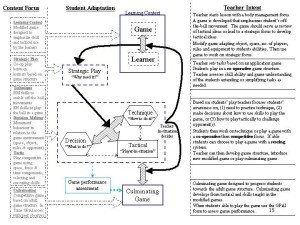
- Contractual work—teacher and student establish an agreement that the student must perform a certain amount of work by a deadline
These assignment categories (e.g. peer learning, independent, small groups) can also be used to guide the instructor’s choice of assessment measures that can provide information about student and class comprehension of the material. As discussed by Biggs (1999), there are additional questions an instructor can consider when choosing which type of assignment would provide the most benefit to students. These include:
- What level of learning do the students need to attain before choosing assignments with varying difficulty levels?
- What is the amount of time the instructor wants the students to use to complete the assignment?
- How much time and effort does the instructor have to provide student grading and feedback?
- What is the purpose of the assignment?
- to track student learning
- to provide students with time to practice concepts
- to practice incidental skills such as group process or independent research
- How does the assignment fit with the rest of the lesson plan?
- Does the assignment test content knowledge or does it require application in a new context?
STUDY GUIDES
Overview
The Institute of Progressive Education and Learning ( i.pel) is developing curriculum that will be designed to make learning fun. The course study guides will be chalk full of tips on how to get ready for high-stakes testing. Since every i.pel course will have entertainment elements many of the study guides will be based on that course’s entertainment elements. QuizGames will be a good example. Every chapter PowerPoint will also be a student study guide.
Every chapter PowerPoint will also be a student study guide.
eBook Studying
Studying from an eBook is different than studying from a traditional textbook. The main differences with studying from an early eBook as opposed to a paper textbook is that with a traditional text book the reader has a better idea of where they are in a textbook. With a text book you know what page you are on and it’s easier to go back and forth in a paper textbook and remember were something is. That said, today’s eBooks are fast becoming student friendly.
One study about students using eBooks showed that the bigger the screen that the student is reading from the more the student will remember. Also the study showed that middle school students are better at remembering eBook lessons than older students in high school and college. This is probably due to the fact that younger students have grown up using computers and mobile devices.
How the Student Studies
How students study depends on student type and what the student’s goals are for taking the course. This is the reason we will give students three ways to learn – the eBook; the PowerPoints; and entertainment elements. The reason so many students struggle with school work is because they are non-traditional learners. Each student is different and what’s hard for one student may be easy for another (See Balance-based Learning). This is why learning and studying alternative are so important.
If a student feels they would remember more reading a paper copy of a concept they will be able to just print it out and put it in a three-ring binder. By the end of the course they will have printed out their own customize paper textbook. A student should look at all three formats to see which one they prefer to learn from. They might want to learn from all three – kind of like mixing and matching.
Once the student and teacher have setup the student learning format they will be free to move as fast or as slow as they want in the eBook. Open Educational Resources (OER) offer teaching and learning materials that are available for free over the internet. If a student is a slow learner some of these OERs will help that student keep pace and for fast learners the OERs will help that student learn a subject in greater detail.
Reading and Writing
Reading is one of the greatest things we can do as humans and there is nothing like finding a quiet place to relax and read. The eBooks will contains all of the curriculum text but they will be much more proactive than a textbook. In the eBook the student will be able to listen to a lecture while reading the text which is also a great way to learn. One of the problems with the eBook is that when it comes to studying it will contain distractions like the virtual videos, “Boring Buttons,” the QuizGames and the OERs. So if the student is having a particular problem with a course concept they will be able to print it out and study that way.
 Another thing about reading is that students should re-read the course information several times. Some A/B students are A/B students simply because they re-read their lessons. Re-reading is actually one of the best study tips a student can get. Students should first read the course text once over to familiarize themselves about what they are learning and with each re-read the student will always learn something new- always.
Another thing about reading is that students should re-read the course information several times. Some A/B students are A/B students simply because they re-read their lessons. Re-reading is actually one of the best study tips a student can get. Students should first read the course text once over to familiarize themselves about what they are learning and with each re-read the student will always learn something new- always.
What came first reading or writing? Seems like it should be writing since if someone didn’t write something it no one could read it. Reading isn’t the problem writing is. Most middle school and high school students can read because reading is part of our human survival instinct for knowledge about the world around us. Writing, on the other hand, really isn’t necessary for survival in the wild. It is necessary for communication but we primarily use talk for that. The writing skills of students coming out of high school have been falling for some time.
A couple of tips on writing are first, that all words sentences and paragraphs have a beginning, middle and end. The second tip is the secret to good writing (just like reading) is in the re-write. There is a saying with writers “The secret is in the re-write.” Student writing makes more sense, is more creative and sounds better with each re-write. That’s how we got this website to where we wanted it – re-write, re-write, re-write. Plus how is anybody going to know how brilliant a student is if they don’t write about it?
Learning and Memorizing
There is a subtle difference between learning and memorizing. Both lead to knowledge but learning is a conscious and subconscious activity while memorizing is a focused, conscious act. Memorization is obviously required in education but since the student will be collecting knowledge though self-learning his/her whole life he/she should practice gaining knowledge through reading text and PowerPoints, playing computer learning games and watching educational videos. The secret to gaining knowledge this way is repetition. The more the student reads and watches the more he/she learns. Each time a student does a ‘do-over” she/he will pick up something they missed the first time through.
In Annie Murphy Paul’s article “Highlighting Is a Waste of Time: The Best and Worst Learning Techniques,” research has shown that some of the best ways to remember things are:
- Spread out study sessions
- Practice testing
- Using flash cards
- Sleep
Spreading out your study sessions, rather than engaging in one marathon. More tests — but these are not for grades. Research shows that the mere act of calling information to mind strengthens that knowledge and aids in future retrieval. Using flash cards like digital apps like “Quizlet,” “StudyBlue” and “FlashCardMachine.” And lastly, the easiest way of all to improve implicit learning: sleep. Research has shown that during sleep, the brain identifies meaningful patterns in our memories from the preceding day and “consolidates” them, or makes them stronger and more permanent.
Other Learning Tips
Listening to music while studying, helps “block out the white noise” for some students but it doesn’t work for everyone. Some find music too distracting to study with while others love it. If a student lives in a noisy house or needs to study in a noisy public place listening to music on headphones or earbuds can help, “find the student’s own space” to study. The choice of music is important too.  Head-banger music probably isn’t a good choice of music to study to but learning is the objective and if it works it works. We know most K-12 students aren’t into classical music but listening to the classics while studying can have the dual effect of creating an appreciation of some great music while at the same time learning the course information.
Head-banger music probably isn’t a good choice of music to study to but learning is the objective and if it works it works. We know most K-12 students aren’t into classical music but listening to the classics while studying can have the dual effect of creating an appreciation of some great music while at the same time learning the course information.
A.D.D. and Students
We want to say a few things about A.D.D. We are not talking about A.D.H.D. which is a serious disorder that has to be treated by a medical doctor. We are talking about the garden variety A.D.D. which everyone has to some extent. If the caveman didn’t have a little A.D.D. he would have been eaten by the saber tooth tiger. In fact, some people with A.D.D. become good multitaskers and become quite successful in life.
K-12 students are still developing your attention spans and sometimes people mistake a short attention span for A.D.D. which it isn’t. Student attention spans don’t all develop at the same rate and at the same time. As much as technology has helped people expand their horizons it is also, because of its ease of use, limiting the attention spans of everyone, including adults. Just like RAM, a type of computer memory, human short-term memory is extremely volatile and weak that’s why it’s hard for some people to remember the name of people they just met.
What each student has to do is work on activities that will help develop longer attention spans. Understandably, this involves activities that the student likes or more than like – has a passion for. Students have to learn to “block out the white noise” in order to study and each student has to figure out their own way to do this.
Stressed Out
The last thing we want to have happen is make a student uptight over learning. If a person gets stressed out the brain shuts down and doesn’t want to learn anything new until the stress goes away. Students should learn the value of ergonomics which is the proper way to sit while using a computer. Another great stress release is physical activities such as sports, hiking, skating, swimming and just plain walking. If it’s raining the student can just nail one foot to the floor and run as fast as he or she can. Oh, by the way, humor is also a great stress release.
Getting a good grade is probably the best stress release in any class. This is why all courses should have several ways to get a good grade. Students have different learning styles and retain information differently. If the student reads and/or listen to the text; if he/she plays computer learning and quiz games (considered practice quizzes); are proactive with class participation, labs and projects students will do great.
Help!
We will be with i.pel student every step of the way. Students will find a lot of helpful information on our website and we have an 800 number that you can call for help with any of your questions and problems. Figuring problems out on your own or with friends will be the norm but if the student gets stuck and needs help we are here for our students.

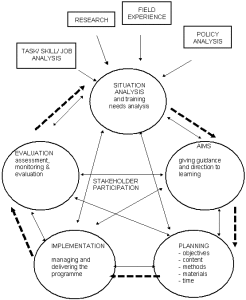
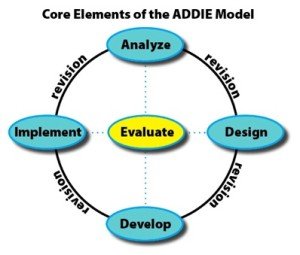
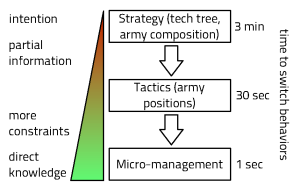
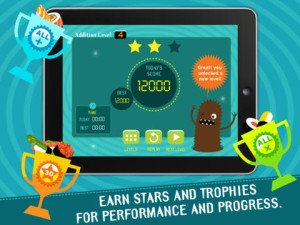
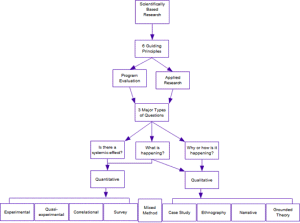

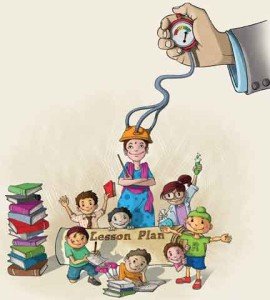
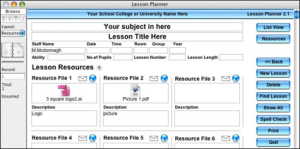
Recent Comments